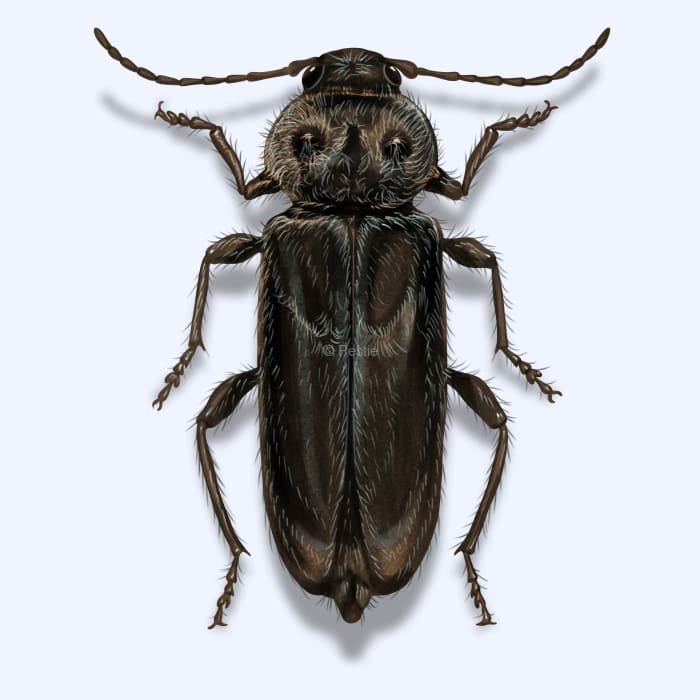How to identify and get rid of old house borers

Don’t let your house get bored to death
If you live in an older home with beautiful exposed timber beams, you might think your home is more susceptible to wood-boring beetles. For the old house borer, it prefers homes that are only four to seven years old.
This longhorn beetle can be quite damaging to homes with untreated or poorly maintained wood. Although they don’t pose a direct threat to humans, their larvae can cause serious damage by tunneling through wooden structures, potentially weakening the integrity of your home.
Old house borers have a long life cycle, with larvae that can take years to mature. It’s the larvae that do all the tunneling and damage. Females will find dead pine, fir, and spruce wood and lay their eggs in the wood. The larvae then eat their way through the wood and after 2-10 years, will exit out of the wood as an adult.
Damage can be happening in your home without you even realizing it! This slow but steady destruction can go unnoticed for a long time, making it crucial to identify and treat an infestation early.
How to identify old house borers
Old house borers have grayish-brown bodies with distinctive white spots on their wing covers, along with long, segmented antennae. Their bodies are elongated and slightly flattened, and their wing covers have ridges. If you notice small, oval exit holes in wooden beams, along with fine sawdust beneath the wood, these are signs of an old house borer infestation. The larvae, which you probably won’t ever see, are cream-colored and can be found tunneling within the wood, creating hollow sounds when you tap the wood.
How big are old house borers?
Adult old house borers can grow up to 3/4 inch long.
Where do old house borers live?
Old house borers are found throughout the United States but are more common in homes and buildings with untreated or poorly maintained wood. You’re most likely to find old house borers in wooden beams, floorboards, and other structural wood within your home. They prefer wood that is at least 10 years old.
How to get rid of old house borers
Keeping old house borers out of your house is easier to do than trying to remove an infestation that is already in the wood. Sealing up cracks and gaps around your home should do the trick.
If you suspect you have old house borers in your wooden floors, beams, or posts, consider these options:
- Replace infested wood: If the infestation is localized, removing and replacing the affected wood can eliminate the problem.
- Improve ventilation: Old house borers thrive in damp environments, so increasing ventilation and reducing humidity in crawl spaces, basements, and attics can make the environment less hospitable.
Additionally, establishing a perimeter spray around your home can keep old house borers at bay. Check out Pestie’s pro-grade DIY solution for an easy way to keep your home pest-free this year.
Treat old house borers with Pestie
If you're still having trouble keeping old house borers away, the best option is to use a pro-grade, effective pest control solution like Pestie.
Pestie is a do-it-yourself pest control solution that's specially designed to keep old house borers and other pests away from your home.
With Pestie, you can rest easy knowing that your living space is protected and free of creepy crawlies. And the best part? It's designed for people, pets, and the planet, so you can say goodbye to harsh chemicals and hello to peace of mind!
- Save hundreds compared to traditional annual pest plans
- People, pet, and planet-friendly
- Pro-grade customized formulas
Quick facts
How dangerous are Old House Borers?
Medium danger risk
While old house borers are not harmful to humans directly, they can cause significant structural damage to homes if left untreated.
- Scientific name
Hylotrupes Bajulus
- Other common names
European House Borers, Italian Beetles, House Long Beetles
- Colors
Gray/brown
- Life span
2-10 years
- Diet
Cellulose from softwoods
The larvae of old house borers are known to make faint clicking or ticking sounds as they chew through wood. Homeowners with severe infestations might actually hear these sounds coming from their walls or floors.








